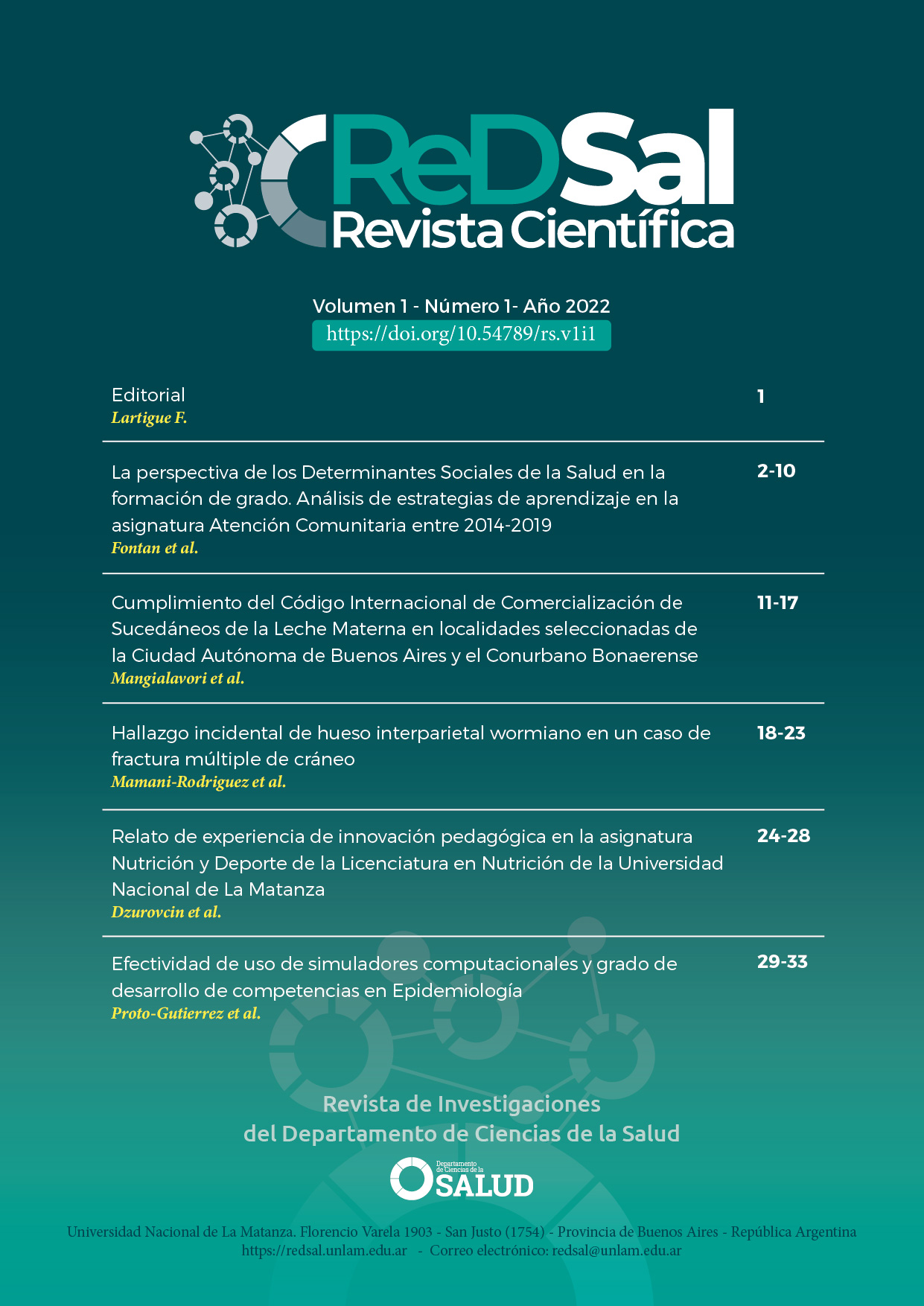Incidental finding of interparietal wormian bone in a clinical case of multiple skull fractures
DOI:
https://doi.org/10.54789/rs.v1i1.5Keywords:
skull, fracture, Wormian bone, pediatricsAbstract
The Wormian bones are supernumerary bony cranial structures. Their origin is multifactorial, being many times related to metabolic bone diseases. In this article, the objective is to describe the finding of an interparietal Wormian bone in the context of a clinical case of multiple skull fracture due to trauma. Case report: a female pediatric patient, with no medical history, suffered a moderate traumatic brain injury. She was evaluated at the medical emergency department, finding a left parietal cephalohematoma in the clinical exam. A computed tomography was performed. It showed two linear non-displaced fractures in both parietal and occipital bones, associated with an incidental Wormian interparietal bone (os incarum). There were no intra-axial lesions. The patient was hospitalized and had a good clinical evolution until the time of discharge. At eight months follow-up, no complications were found, showing radiological improvement. Conclusion: Wormian bones constitute cranial anatomical variations. Their incidental finding in imaging studies can cause diagnostic difficulties in certain situations, as may occur in head trauma with the presence of fractures, so it is important to know their relevant characteristics.
References
Sibel C, Funda A, Nuket M. The incidence and topographic distribution of sutures including Wormian bones in human skulls. J Craniofac Surg. 2015;26:1687–90.
Bellary S, Steinberg A, Mirzayan N, Shirak M, Tubbs R, Cohen-Gadol A. Wormian bones: a review. Clin Anat. 2013;26:922–7.
Brothwell DR: Digging Up Bones. London, British Museum of Natural History, 1963
Pryles C, Khan A. Wormian bones: a marker of CNS abnormality? Am J Dis Child 1979;133: 380.
Parker CA. 2009. Wormian Bones. Charleston, SC: BiblioLife LLC. p 19–24
Jeanty P, Silva S, Turner C. Prenatal diagnosis of wormian bones. J Ultrasound Med. 2000;19:863–9.
Sanchez Lara P, Graham J, Hing A. The morphogenesis of wormian bones: a study of craniosynostosis and purposeful cranial deformation. Am J Med Genet. 2007;143 A:3243–51.
Muroi A, Enomoto T, Ihara S, Ishikawa E, Inagaki T, Matsumura A. Developmental changes in the occipital cranial sutures of children less than 2 years of age. Childs Nerv Syst. 2020;4:1784–813.
Marti B, Sirinelli D, Maurin L, Carpentier E. Wormian bones in a general paediatric population. Diagn Interv Imaging. 2013;94:428–32.
Bergman R, Afifi A, Miyauchi R. Skeletal systems: Cranium. In: Compendium of human anatomical variations. Baltimore: Urban and Schwarzenberg; 1988. p. 197–205.
Cremin B, Goodman H, Spranger J. Wormian bones in osteogenesis imperfecta and other disorders. Skelet Radiol. 1982;8:35–8.
Graham J, Kreutzman J, Earl D. Deformational brachycephaly in supine-sleeping infants. J Pediatr. 2005;146(2):253–7.
Barberini F, Bruner E, Cartolari R. An unusually-wide human bregmatic Wormian bone: anatomy, tomographic description, and possible significance. Surg Radiol Anat. 2008;30:683–7.
Guerrero Jazo F, Tovar Spinoza Z, Esparza Gutiérrez S, Hernández Chávez E, Monroy Rizo E. Rupture or traumatic dislocation of cranial suture on infants, involvement of the lambdoidal accessory bones (Wormian bones): case presentation and analysis. Childs Nerv Syst. 2019;35:2233–6.
Idriz S, Patel J, Renani S, Allan R, Vlahos I. CT of normal developmental and variant anatomy of the pediatric skull: distinguishing trauma from normality. Radiographics. 2015;35(5):1–17.

Downloads
Published
How to Cite
Issue
Section
License
Copyright (c) 2022 ReDSal

This work is licensed under a Creative Commons Attribution 4.0 International License.








